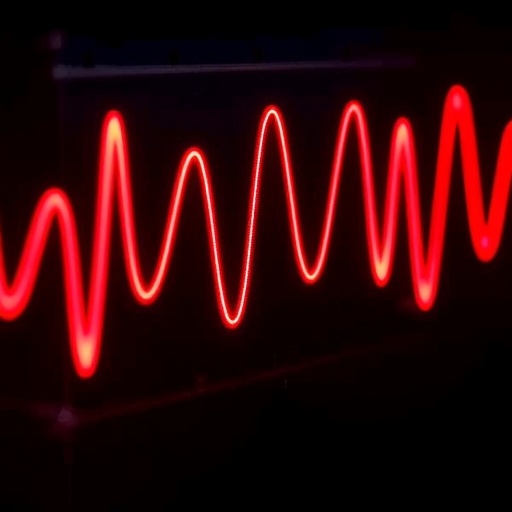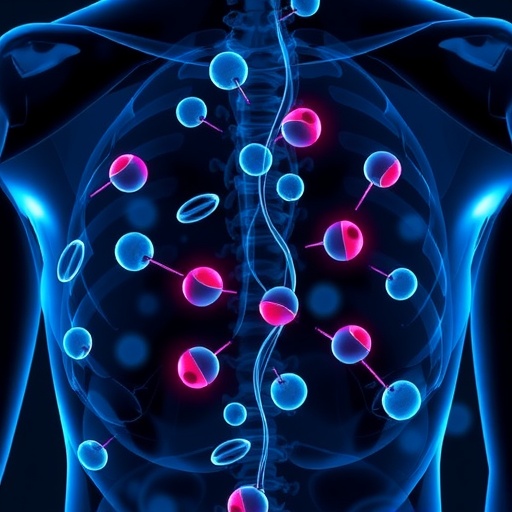
In a groundbreaking study published in Nature Communications, researchers have unveiled a previously uncharted physiological phenomenon occurring after electroconvulsive therapy (ECT): a postictal wave of spreading depolarization observable in both mice and humans. This discovery sheds new light on the neural mechanisms activated during and after ECT, offering profound implications for our understanding of brain dynamics and therapeutic outcomes. The research, led by Rosenthal, Majeski, Somarowthu, and colleagues, merges the sophisticated realms of neuroscience and clinical medicine, demonstrating the power of advanced neurophysiological tools to unravel the enigmatic processes triggered by ECT.
Electroconvulsive therapy, a psychiatric treatment utilizing brief electrical currents passed through the brain to induce seizures, has long been a mainstay for severe depression, bipolar disorder, and other mental health conditions that resist traditional pharmacotherapies. While its efficacy is well documented, the precise neural mechanisms underlying its therapeutic benefits and side effects remain only partially understood. The novel observation of spreading depolarization waves following induced seizures adds a crucial piece to this complex puzzle, potentially bridging gaps in our prior knowledge of postictal brain states.
Spreading depolarization is a wave-like phenomenon characterized by a massive, transient disruption of neuronal membrane potentials, leading to a temporary silencing of brain activity as ions flow abnormally across cell membranes. It has been extensively studied in contexts such as migraine auras, stroke, traumatic brain injury, and epilepsy. However, its presence and role following ECT-induced seizures were previously unexplored territory. This study’s findings suggest that such depolarization waves are an intrinsic neural signature of the postictal state, contributing to the transient neurological symptoms experienced after ECT sessions.
The investigation employed cutting-edge electrophysiological recording techniques that captured brain activity with exquisite temporal precision in both animal models and human patients. In mice subjected to controlled electroconvulsive shocks, researchers observed a distinct spreading depolarization propagating across vast cortical territories shortly after the seizure event concluded. Paralleling these preclinical insights, intracranial recordings in patients treated with ECT revealed similar postictal spreading depolarizations, marking this as a conserved neurophysiological process across species.
These findings have profound implications for interpreting the clinical aftermath of ECT. The postictal period—characterized by altered consciousness, confusion, and cognitive disturbances—has long been noted but poorly understood mechanistically. The spreading depolarization wave may serve as a neurobiological substrate for this transient impairment, providing a target for potential interventions aiming to improve recovery and minimize side effects. Moreover, understanding how this wave modulates neuronal networks could unlock new strategies to harness or refine ECT’s therapeutic effects.
From a technical standpoint, the researchers meticulously mapped the spatial and temporal dynamics of spreading depolarization waves, uncovering that these waves propagate at a speed consistent with other pathological brain events but uniquely tailored to the context of ECT-induced seizure activity. The depolarization was found to silencing neural circuits transiently, potentially resetting overactive or dysfunctional networks implicated in mood disorders. This introduces a compelling framework by which ECT may exert long-term mood-stabilizing effects by orchestrating large-scale neural reorganization through these waves.
Furthermore, the study delves into the molecular underpinnings of this phenomenon. Ion fluxes, especially of potassium and calcium, along with metabolic changes disrupting neuronal homeostasis, were implicated in wave generation and propagation. This biochemical cascade may simultaneously trigger neuroprotective mechanisms and transient metabolic stress, balancing treatment efficacy with risk of adverse effects. Future research targeting these molecular pathways could pave the way for adjunctive therapies that enhance ECT safety and tolerability.
The translational nature of the research—from mouse models to human patients—underscores its significance. Animal studies allowed unparalleled access to invasive electrophysiological data, while human intracranial recordings validated the phenomenon’s clinical relevance, bridging bench to bedside. This dual approach strengthens confidence in the generalizability of findings and invites further exploration into personalized ECT protocols that account for individual neural susceptibilities to spreading depolarization.
Intriguingly, this work also intersects with broader debates regarding brain excitability and resilience. The spreading depolarization wave, while transient and reversible, may represent a double-edged sword: a necessary reset mechanism for dysfunctional circuitry but also a potential trigger for deleterious outcomes in vulnerable individuals. Clarifying these dual roles promises to refine patient screening and post-treatment monitoring, potentially enabling clinicians to anticipate and mitigate risks such as prolonged recovery or cognitive side effects.
Moreover, the study’s methodological innovations, including simultaneous high-density electrocorticography and innovative data analytics, set new standards for neurophysiological research in clinical settings. The high spatiotemporal resolution recordings allowed researchers to discern subtle neural events previously obscured in standard EEG or imaging modalities. This technological leap forward heralds a new era where intricate brain dynamics underlying psychiatric treatments can be deciphered in vivo with unprecedented clarity.
Looking ahead, these insights could catalyze a renaissance in ECT research and practice. A deeper grasp of spreading depolarization waves may inspire novel therapeutic paradigms that optimize seizure induction parameters or integrate neuroprotective agents to enhance patient outcomes. Moreover, this line of inquiry could stimulate investigations into spreading depolarizations’ roles in other neuropsychiatric interventions, potentially unveiling universal mechanisms of brain plasticity and repair.
While the study opens the door to exciting possibilities, it also raises important questions demanding further exploration. For example, how do individual differences in brain anatomy, disease state, or genetic makeup influence the characteristics of postictal spreading depolarization? Could variations in wave dynamics predict therapeutic response or side effect profiles? Answering these questions will be vital in translating these fundamental discoveries into clinical innovations that truly benefit patients.
In addition, integrating these findings with neuroimaging biomarkers and cognitive assessments may help delineate the complex relationship between spreading depolarization waves and behavioral outcomes. Such multidisciplinary approaches could refine prognostic models and personalize intervention strategies, moving toward precision psychiatry where treatments are tailored to each patient’s neural signature and clinical needs.
This pioneering work by Rosenthal, Majeski, Somarowthu, et al. stands as a testament to the power of interdisciplinary collaboration in unraveling the brain’s mysteries. By melding neurophysiology, psychiatry, and cutting-edge technology, the team has illuminated a hidden dimension of ECT’s impact on the brain, setting the stage for transformative advances in neuroscience and mental health care. As the scientific community digests these revelations, the ripples of this discovery will likely extend far beyond the realm of ECT, enriching our broader understanding of brain function and dysfunction.
Ultimately, the identification of a postictal wave of spreading depolarization challenges long-held assumptions and provides a new conceptual lens through which to view the neurobiological consequences of seizure-based therapies. It underscores the brain’s remarkable capacity for both disruption and restoration, offering hope that harnessing such mechanisms can pave the way for safer, more effective treatments for devastating psychiatric disorders. The future of mental health treatment may well be shaped by these waves of depolarization rippling silently beneath the surface, guiding clinicians toward more enlightened interventions.
As research continues to probe the depths of these complex neural phenomena, patients and clinicians alike can look forward to a new era wherein electroconvulsive therapy is not just a blunt instrument but a finely tuned neuroscientific approach grounded in detailed knowledge of brain dynamics. Through such rigorous scientific inquiry, the mysteries of the mind may be gradually unveiled, delivering breakthroughs that resonate long after the seizure subsides.
Subject of Research: Electroconvulsive therapy-induced spreading depolarization waves in the brain of mice and humans.
Article Title: Electroconvulsive therapy generates a postictal wave of spreading depolarization in mice and humans.
Article References:
Rosenthal, Z.P., Majeski, J.B., Somarowthu, A. et al. Electroconvulsive therapy generates a postictal wave of spreading depolarization in mice and humans. Nat Commun 16, 4619 (2025). https://doi.org/10.1038/s41467-025-59900-1
Image Credits: AI Generated
Tags: advanced neurophysiological toolsbipolar disorder and ECTbrain dynamics after ECTElectroconvulsive therapyneural mechanisms of ECTneuroscience and clinical medicinepostictal brain statespsychiatric treatment efficacyseizure-induced brain activitysevere depression treatmentspreading depolarization wavetherapeutic outcomes of ECT





